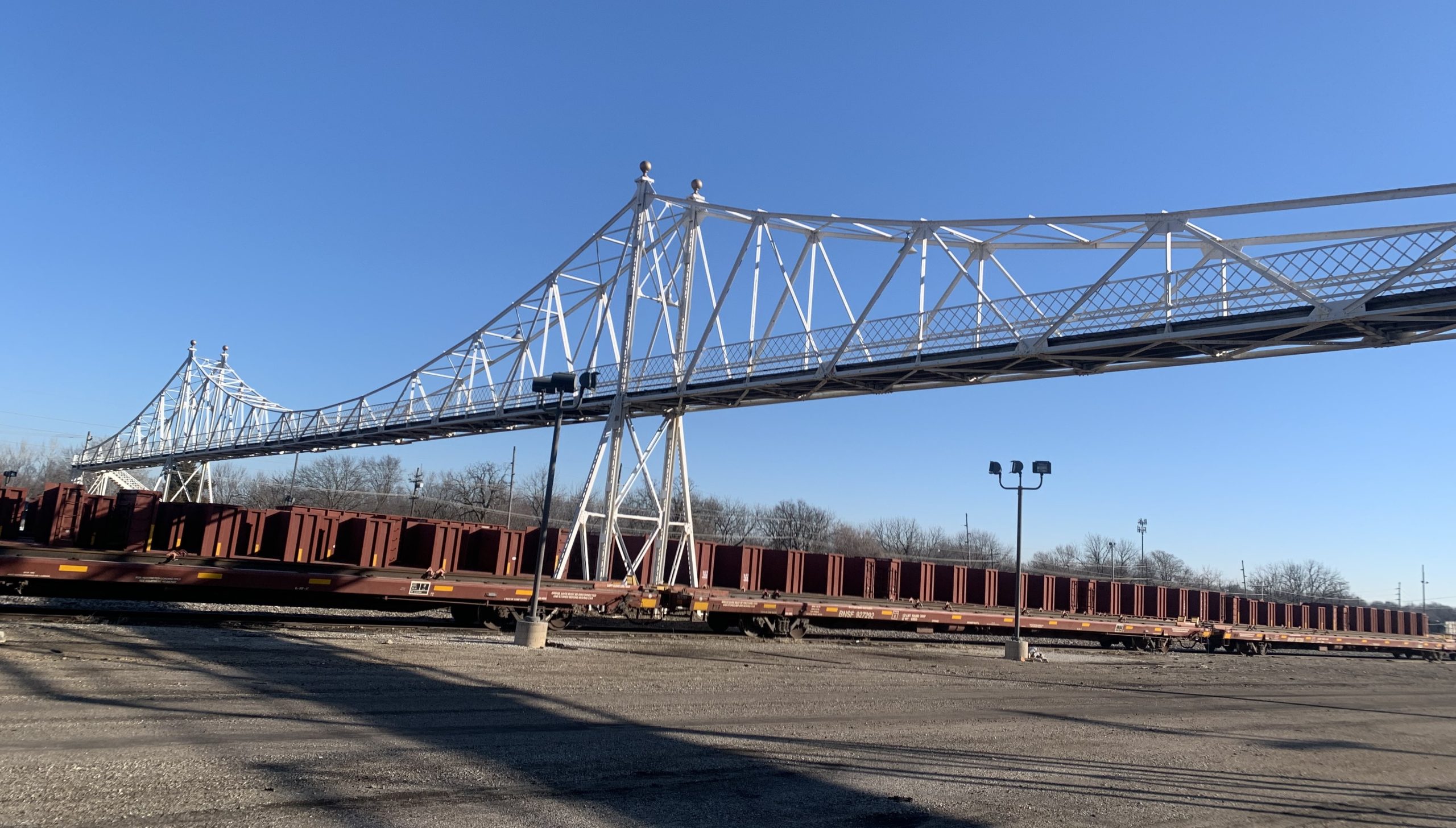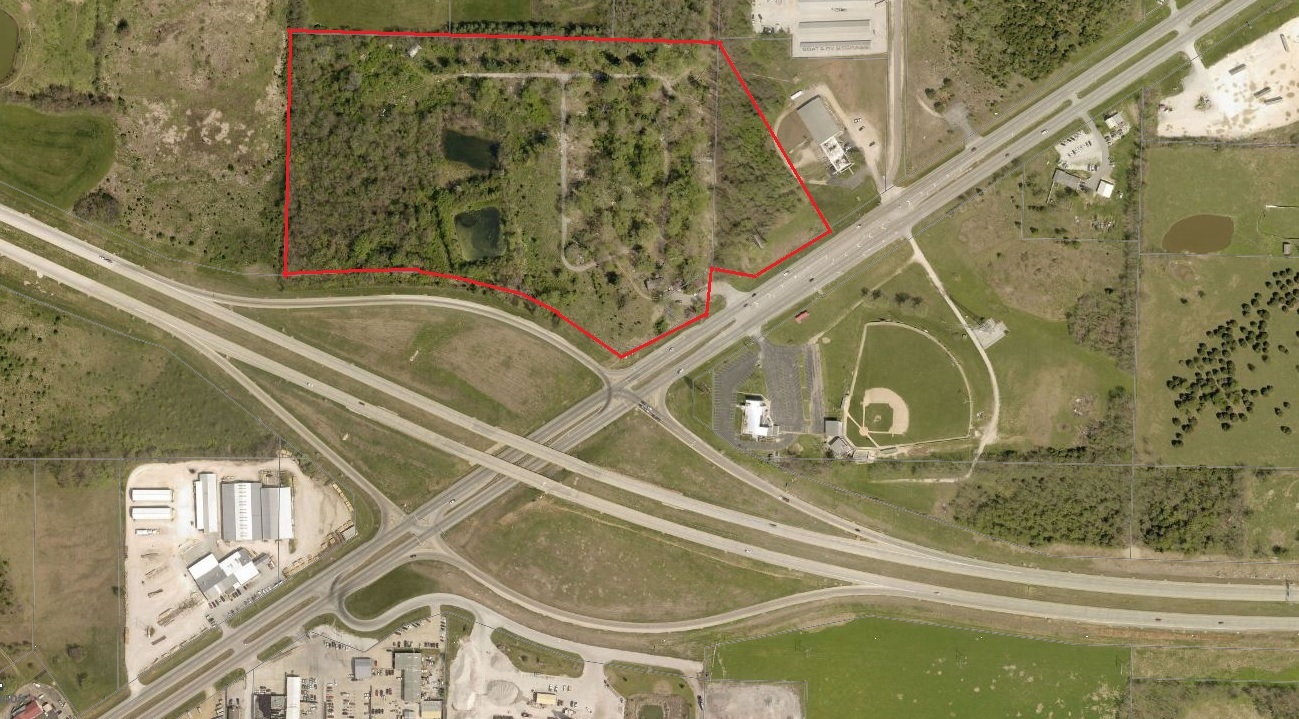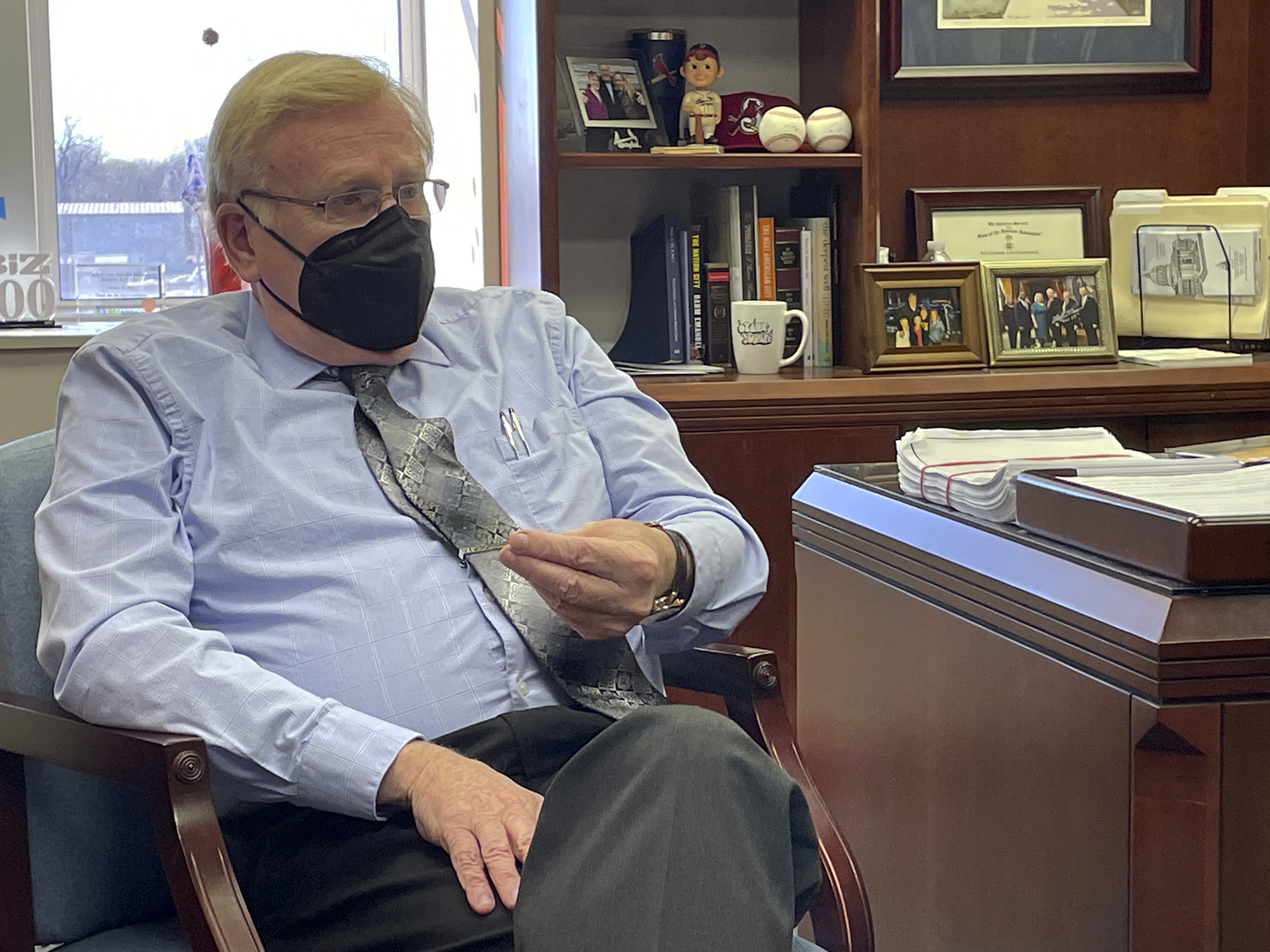High bids on a bridge project caused sticker shock at Springfield City Hall. One bridge is but one example of a squeeze in the construction industry likely to take a toll on government building projects in the coming months.
COVID-19, Winter Storm Uri, supply chain disruptions and funding sources all have parts to play in the changing landscape of the construction trades industry in Springfield. Public entities of all types are preparing to adjust their budgets for construction projects as 2022 progresses.
Springfield Assistant Director of Public Works Martin Gugel described a difficult time for city government construction projects when he made a presentation to the Springfield City Council on Dec. 7.
Gugel’s talk on the state of the corroding Jefferson Avenue footbridge turned into a wider discussion of the construction trades industry, and the challenges that a city government faces in early 2022 when trying to attract contractors to major projects.
In 2021, the city council set aside about $3.2 million to try to refurbish the footbridge, a landmark that connects Commercial Street to the Woodland Heights neighborhood, but has not had a pedestrian or cyclist use it to cross over a BNSF Railway rail yard since February 2016.
The lowest base bid that the city received for the project was $5.5 million.
Why care?
Just about all of us have some ideas about how and where our tax dollars should be put to work. The economic climate for contractors poses a challenge for any taxing entity planning major projects in 2022 because tax dollars simply aren’t stretching as far as they did before the COVID-19 pandemic.
“I wish we had better news,” Mayor Ken McClure told the city council in reaction to Gugel’s explanation of the bids.
McClure said that the high cost — and the idea of trying to wait out a rocky time in the construction trades — doesn't take away from the validity of a project or its importance and significance. However, the financial implications outweighed trying to award a bid so far over budget.
“Paying double from what we have available, right now, is not a viable option,” McClure said.
Rethinking the process
While the news on the footbridge was disappointing, Gugel said it did help the Springfield Department of Public Works learn about the climate for contractors.
“Even though we didn’t come out of this bid with a low bidder that we could award the project to, we did gain some valuable information from it, not just the feedback from the contractors as they explained their struggles putting together their bid, but also getting a better idea on costing and a better picture about the way the environment or the economic market is right now as far as materials and labor,” Gugel said.
Gugel felt that contractors are less likely to bid on unique or specialized projects in markets where finances are tight, and therefore, financial risks are higher.
Megan Short, executive director of the Springfield Contractors Association, helps represent more than 300 member firms across a swatch of the construction industry. The group works directly with local governments on behalf of its member contractors.
“The city is one of our partners,” Short said. “Overall, we have been working together to try to come up with what is a new way we can work for the better overall climate.”
Changes in the construction trades industry took off when COVID-19 arrived in Missouri in March 2020.
“A lot of it started with COVID-19, and the problem is that basically the system broke. Everything was ‘just in time.’ Manufacturers were making supplies just in time, contractors were ordering supplies just in time,” Short said. “We have never gotten caught up from that. Construction is still in a boom, we still have all of these projects coming in, especially on the public side.”
While construction work is sought after, materials and labor don’t always coincide with the demand. Short said that time constraints and lack of materials are the two toughest challenges that contractors face when it comes to public sector projects.
“With so many projects out there right now, you have to pick and choose based off of bonding how many projects you can have at one given time,” Short said.
Suppliers are not holding their prices like they used to, which creates some potential risk for contractors to lock prices with their clients.
“There are some suppliers that are holding it for 10 days, there are some that are holding it for three days, and there are some that are holding it for 24 hours and saying you've got to let me know,” Short said.
Hard deadlines, like the deadlines that often come when a local government uses state and federal grants to help fund a project, also create risk for contractors.
“There is a cost with risk,” Short said.
Overall, Short said that Springfield is still a city that contractors will want to work with.
“There is a lot of teamwork that you wouldn't have seen in the past, which is a positive right now
We obviously want for public dollars to go as far as they can,” Short said.
Who is affected?
- Taxpayers
- Springfield residents
- Contractors, subcontractors and construction workers
- Government officials
Steel and paint
In addition to replacing some key weight-bearing parts of the trusses on the bridge, Gugel said that repainting the Jefferson Avenue footbridge will be more complicated than anticipated.
“They would have to go at it in phases, basically encapsulating or tenting sections of (the bridge) at a time,” Gugel said.
Gugel said that a work crew would need a total of seven days to encapsulate, paint and cure one section of the bridge, and then repeat the process several times over the span of the painting phase. It was much more involved than he initially thought.
“Again, all of this over an active rail line with a minimal clearance between the bottom of the bridge and trains that would pass underneath,” Gugel said.
Springfield City Manager Jason Gage also gained some insight from contractors who declined to bid on refurbishing the bridge.
“Contractors don’t have to deal with uncertainty. They can look for larger projects, projects with better margins and less uncertainty, because of the climate and all of those dollars out there,” Gage said.
Steel and paint, two key materials in the Jefferson Avenue footbridge, are materials that Short identified as the subjects of supply chain issues. Bar joists, and other steel materials, are tough to come by. Some types of paint were driven toward shortage status after Winter Storm Uri lowered production levels in 2021.
“The freeze that we had last spring down in the south, that really had a huge impact on paint,” Short said.
Production of resin and some plastics also dropped off because of Winter Storm Uri.
The Springfield City Council will decide how long it is willing to wait to see if economic conditions in the construction trades improve.
“One of the concerns or challenges we have is in addition to funding whatever it might take to build the bridge is finding the contractors who are willing to do it in the next year or two versus needing to wait until we get far out past this climate,” Gage said.
Gage said the city will continue to open discussions with contractors about how to structure requests for bids in ways that will entice contractors to bid.
Walking forward
The footbridge is one concern among many for Mayor McClure.
“I fear about our other upcoming projects. I fear about re-bidding with a higher estimate, which means we have to come up with additional funds from some source, which means something else is not being done,” McClure said.
Gugel agreed that the footbridge, even with its unique set of challenges, won’t be the only project in 2022 that results in bids over budget.
“All of these budgets were set early on. Those will have to adjust, because again, we’re seeing bids coming in higher across the board,” Gugel said.
The current climate takes away much of the “wiggle room” that the city of Springfield might have to award extra options on bid packages, and it undersells any cost savings that has happened previously.
Construction companies are changing the way that they do business, including ordering materials in advance and storing them instead of having materials shipped directly to a job site. That changes insurance costs, plus the cost of having space to store materials. Because some construction materials are valuable, they have a tendency to get stolen if they aren’t secured, and so construction companies also assume the cost of keeping stored materials secure from theft.
Short says the Springfield Contractors Association and its members are working to foster good senses of understanding and positive relationships with public entities. Public projects are more transparent and open than private projects, which sometimes invites more scrutiny.
“People are doing the best they can. There are change orders that may change the prices,” Short said. “It is in everyone's best interests for the subcontractors to stay in business and for the suppliers to stay in business.”
Short said that it's harder for contractors to manage the permitting process for a project in a larger city like Springfield, because larger cities tend to have more projects going at any given time. In smaller suburbs, there may only be one or two major projects happening at once, which means larger projects can gain approval and permits faster than they would in larger cities.
Springfield City Councilman Richard Ollis said that the high bids for the footbridge were one example of the financial decisions that lie ahead for public works and infrastructure projects in 2022.
“I hate to be negative, and that’s not my intent here, but we’re experiencing significant upward pressure on all of our projects as far as pricing goes. It is going to be a challenge to — for lack of a better word — execute our capital improvement project list within the budget,” Ollis said. “Every other project we’ve got going; it’s going to be a challenge.”
Impact of slow refurbishing on Commercial Street
The Springfield City Council and public works department has not decided what to do about the Jefferson Avenue footbridge project. One possibility is that a refurbishing or reconstruction project will have to wait months — or years — for the construction climate to improve and for the likely cost to come back down closer to the original $3.2 million estimate.
City council members and stakeholders on Commercial Street have discussed another possibility, though it also comes with a price. A building platform may be built somewhere on Commercial Street, giving people the chance to view the bridge and learn about its history without crossing it.
Among several other professional pursuits, Dr. Lyle Foster is the owner of Big Momma’s Cafe and Espresso Bar, which is about a tenth of a mile west of the Jefferson Avenue footbridge.
According to Google Maps, you can walk from the front door of Big Momma’s to the footbridge plaza in about two minutes.
“Many stakeholders are extremely frustrated. I probably describe it now as an opportunity lost,” Foster said. “I think part of the reality is it’s been closed long enough that the impact is probably where people have adjusted. You can’t go up on it, you can’t take pictures on it.”
Foster said that Commercial Street is a popular spot for photographers to take portraits or scenery photographs. That’s why he supports the idea of keeping the historic bridge in place, even if people can’t walk across it, and constructing a viewing platform.
“I also feel like this, if the bridge does get renovated, rehabilitated, the platform also gives you a place to safely watch the process,” Foster said. “Sometimes you have to figure out how to get some lemonade out of the lemons, instead of just sitting there mourning.”
The Historic C-Street district is also recovering economically from the COVID-19 pandemic. Loft-living, Airbnb and VRBO stays — and the development of wedding and event venues — have changed the landscape of the street when it comes to reasons that people visit.
“Commercial Street has definitely become a much more visible place to visit,” Foster said.
Foster added that people don’t tend to wander into the district aimlessly. They usually come to Commercial Street with a purpose in mind, whether that’s to visit Big Momma’s or another restaurant or shop. A viewing platform with some opportunities to learn about the bridge and take photographs could be another reason for people to make purposeful visits.




